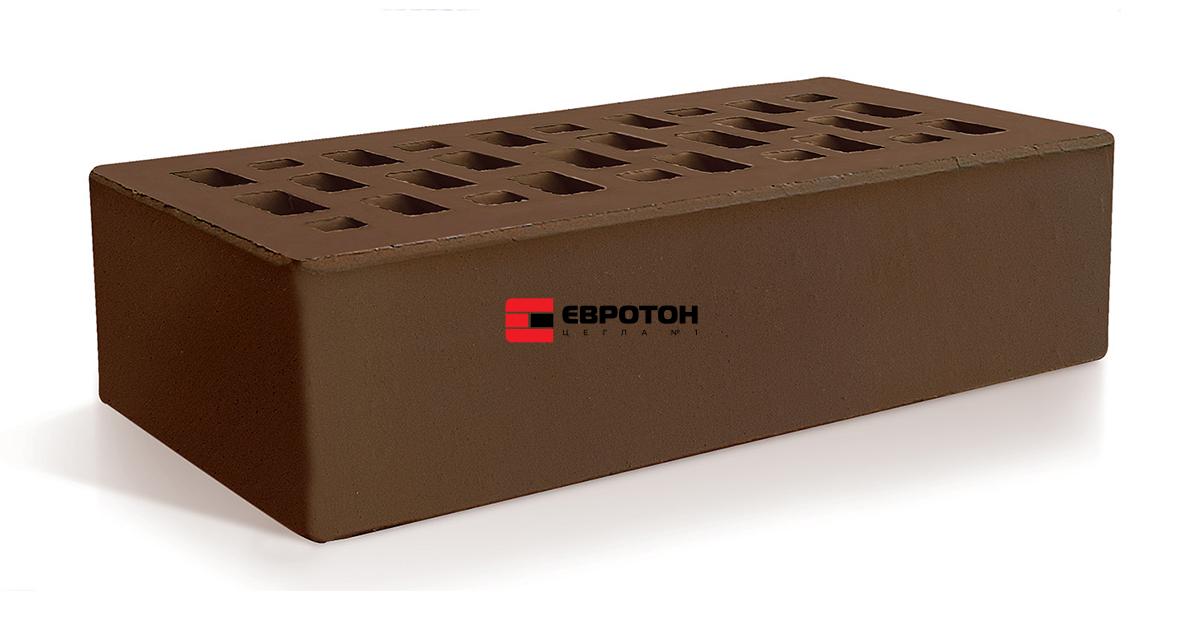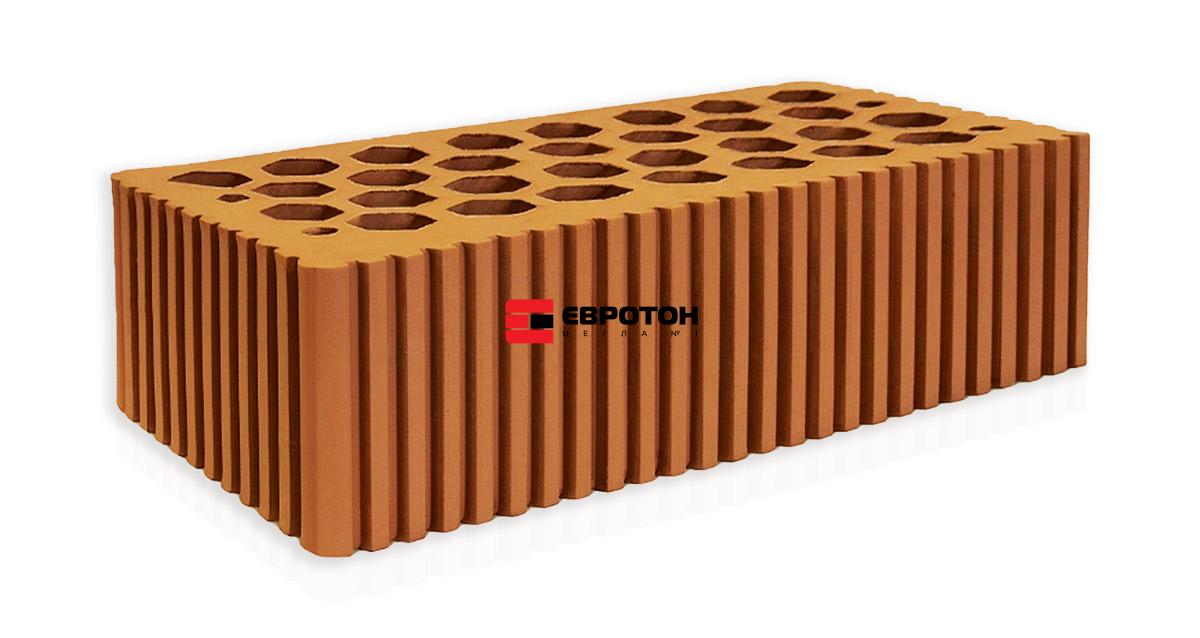Modern technology
Euroton company, the first in Ukraine, started competitive production of clinker and facing bricks according to the newest technology on the modern equipment of the leading German companies «Lingl» and «Rieter» with high level of automation, control and management of technological process at all stages of production.
High quality of the product
Highly automated production lines allow to minimize human factor to ensure high quality of products. The entire production process is based on NC units SIMANTIC S7, manufactured by SIEMENS company and digital step regulators of PHILIPS enterprise, which secure all process parameters and guarantee strict process tolerances. High reliability of the mentioned companies’ electronic facilities ensures high quality of manufactured product.
Brick story
Brick is the oldest building material. The Bible mentions the bricks as building material has since human settlement immediately after the Great Flood.
Today we are separated by thousands of years of historical moment – people start using clay for making bricks. Therefore it is not surprising that got lost somewhere in the centuries whoever invented this building material. History hides name and who first thought of burned clay to speed up the production process and improve the quality characteristics of brick.
Up to date Mud bricks was widely used in many countries.
However, the first evidence of the brick building at the dawn of civilization (3-2 millennium BC) can be found in the nations of Greece, Egypt, Mesopotamia, ancient Rome, where the brick built houses and taught complex designs, including arch arches, aqueducts. Although by historical evidence is the Greeks, not the Romans invented the method of burning bricks, but first brought into Europe by the Romans.
At the end of the 1st millennium Roman Empire with aggressive plans paced Europe. Important strategic road and became scorched brick began to be used widely. Military legions brick workshop organized everywhere, spreading, thus producing vehicles throughout the Roman Empire, creating a truly Points of building structures.
Thanks to the Italian masters of brick construction spread throughout Europe.
A striking example of the brick building in the John III was the construction of walls and temples of the Moscow Kremlin, which led the Italian builders. In Ukraine brick building spread from Byzantium with Christianity and science of architectural construction of religious buildings.
The first industrial ovens for baking bricks have appeared in the 15-18 centuries. In those days, the furnace was the small room with a small entrance openings. In these areas taught brick rectangular shapes, made by hand. Then these semifinished products levied with coal, set on fire and have been used to fill the entrance slits.
And artisanal mode of production of bricks only since the mid 19th century enterprising British transferred to industrial flow.
However, the powerful production of bricks acquired in Germany. It was here in 1854, Berlin industrialist Shlikeyzen invented shtranh Press. But in 1858 Architect F.Hoffmann patented ring stove.
More brick dominates among building materials due to the availability of raw materials, lack of need for the metal, durability summary of his buildings and their architectural expression.
For residents of hotspots where there was a sufficient amount of natural stone reserves and processing complexity entailed their high price, especially acute need for robust, stable and durable building materials, which prompted the search for alternative solutions. It was open and applied technology burning natural clay until sintering, and the resulting material is called Clinker from him. (Holl.) Klinker – dzvin.Takyy sound issued a brick through extraordinary strength and density structure.
Authorship is attributed to the Dutch invention of clinker. That they were the first in the world in the 19th century developed a technology to produce heavy-duty ceramic stone. As the Romans – the roads were strategic targets and the Dutch clinker brick primarily used for paving roads. The first paving way connected Amsterdam and Haarlem. Over time, the Dutch began to produce clinker for the construction of houses. From Holland clinker production technology spread first to neighboring Western European countries, and then in the USA.
Millennia of the elements: fire, water, air and earth creates a building material, incomparable with anything in its purpose and durability.
And in any case, the fact remains unchanged for centuries confirmed the unique achievement of mankind, which still has not changed its nature and significance.
Fashion for construction
As designers who dictate fashion construction season today, it certainly is developers.
Until recently, people in need of housing, including private, are met by the building materials that were there, available and suitable for building. Living in the same city, the state program, secured housing in high-rise buildings.
But now with the development of the construction industry, and as a consequence – offers a variety of building materials, the development of transport infrastructure and high level of service, and most importantly as welfare and financial capabilities of citizens, and increased requirements for most builders and future home owners, according to previously nobody noticed. Their tastes began to change.
With the introduction in our country market economy, mass uniformity and gradually began to change for individuality. This trend has found itself in the rapid growth of the construction of private homes and cottages. People increasingly began to appreciate not achieve civilization in the stone jungle, and gravitate to nature, clean environment and, with the rest to freedom. And, as it turned out, individuality can also be massive.
What, then today must be at home to their value every day growing?
If the developer wants to build a house that will always be in demand, he needs to bet and project and construction material.
Customer benefits today:
1.Architectural individuality. When mass urban planning, architects are trying to go beyond the dull gray uniformity of the large houses that we have to some extent resigned. Today pleasant to watch, and more live in homes with unobtrusive sufficient manifestation of architectural individuality and yet harmony with the environment.
2.The attraction to nature. More and more people are trying to find a refuge not in a big polluted metropolis, and in the suburbs, closer to nature.
3.Today`s priority is housing construction.The attraction of the achievements of civilization for many supporters of private dwellings, finds an outlet in cottage construction, where the centralized provision of various essential goods.
4. Area. Private developers are no longer competing for the right to be the owner of the largest in area buildings, now preferred homes with a balanced space and functionality with the release of more territory under the land. Currently, the most popular ready homes range from 300 to 500 thousand dollars, mostly built in the last 5 years and houses costing up to 150-200 thousand dollars, the demand for which is growing in contrast to the proposal. For free land around the house, the owners vdovolnyayutsya ranging from 12 to 50 hundredths.
5. Style. Today`s developer, primarily interested in the original draft of his personal home.
By analyzing the consumer market most “running” today – is a 2-floor house with attic roofs complex structures, an area at the base of not less than 100 square meters. m, with the land not less than 20 “acres.” House Ponente have at least five rooms, a large lounge with fireplace, dining room, billiard room, two bathrooms, a swimming pool and sauna. Among the outbuildings: a garage, shed. It`s important to was nearby infrastructure – good road, a shop, a pharmacy, a pond, a telephone line.
In the construction of the cottage there was a tradition of forming their collection of architectural styles, created either by its architects and developed known reputable bureau.
With exquisite style “palaces” and unassailable “locks” with asymmetry, lots of windows and turrets, has lost its relevance. Although the demand for them remains, but is only 1.8% of the total number of buildings.
Today the leader is “classic.” If until recently could be observed similarity or contrast, excessive vychurnist projects, now dominated designed in classic style options for homes with clear principles of the architectural form, symmetry. Such a style that will benefit from 39.6% buyers of country houses. Cottages in the “US-Canadian” style is usually low, almost always treated siding or other synthetic materials. These homes are popular in 16.4% of the buyers.
The small two-story house, decorated with natural materials – stone, wood in “Nordic” style – is very similar to the US-Canadian cottage. In homes Nordic style today is home to about 12.7% of owners of suburban real estate. This category included homes in the “Nordic” and “Bavarian” style.
Focusing on the “modern” observed in 11.2% of the buyers. The main features of modernism – no straight lines, harmony of forms, facades of buildings are inherent in most cases dynamism and fluidity of form.
Great popularity now takes style “chalets”. He preferred about 5.1% of private developers, especially in Transcarpathia. Born in the Alps, he has a distinguishing feature – a sloping roof that dominates the entire volume of the house. In the classic “chalet” first floor must be built of stone, and the second – from a tree, but more common is the construction of homes entirely of wooden beams.
Style «hi-tech» is considered an indicator of developments in the field of high technology. Unlike other styles, he focuses on the combination of metal structures with glass. But this style is not caught within Ukraine, probably because of the benefits the residents of private homes warm and cozy country comfort.
There are other architectural styles, such as “loft”, “country”, “constructivism,” “avant-garde”, “Venetian” and “colonial” style, which can be successfully used for the construction of special purpose buildings.
The market is also a whole category of homes that are the epitome of their fantasy owners who do not belong to any of the above styles. Such individual owners we refer to the “other” 15% of developers. But these buildings subsequently becomes smaller. Already we can say that the customer is becoming more sophisticated in their preferences, there is a desire for elegance and classicism, the desire to imitate western architecture.





